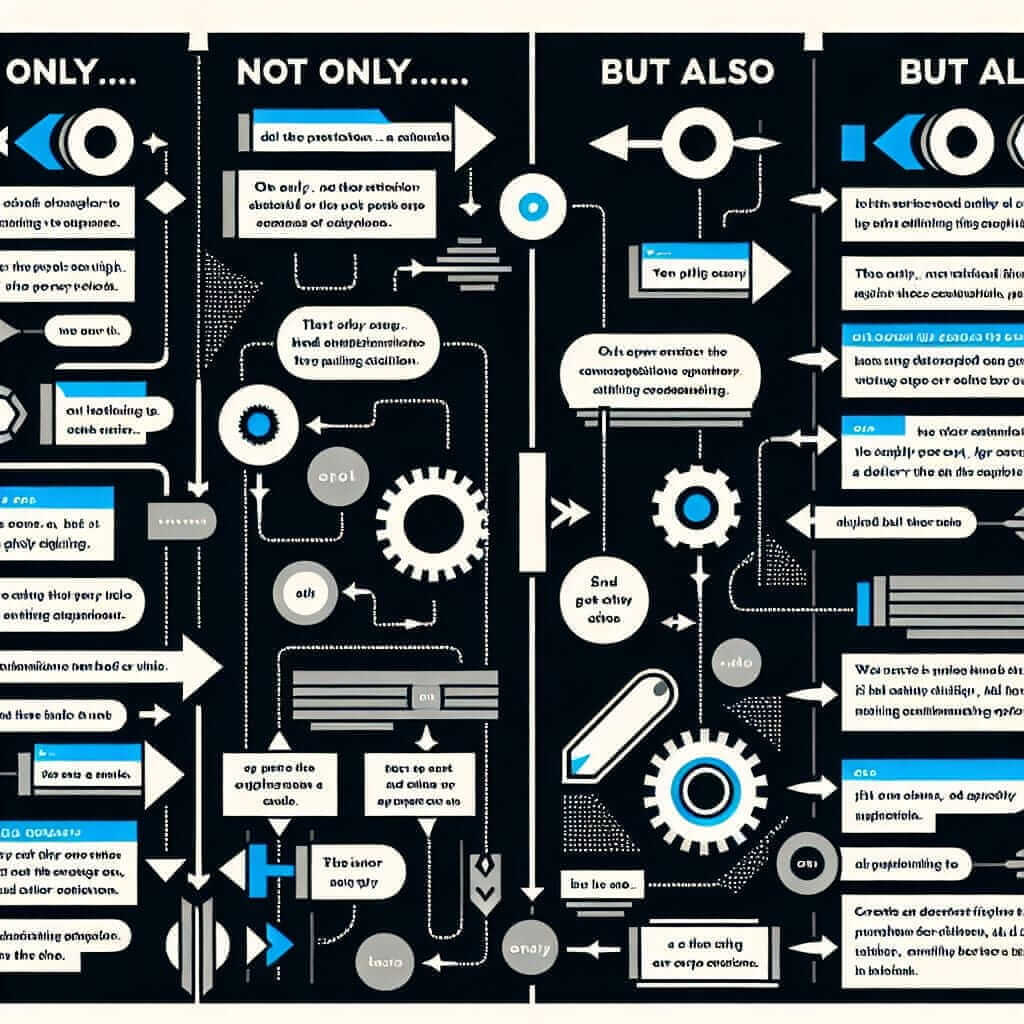The phrase “not only…but also” is a powerful tool for adding emphasis and complexity to your writing and speaking in the IELTS exam. It allows you to highlight the multifaceted nature of a situation and demonstrate a wider range of vocabulary and grammatical structures.
Here are a few examples of how “not only…but also” can be used effectively across different sections of the IELTS exam:
- Writing Task 2: “Globalization has not only led to increased economic interdependence but also fostered cultural exchange among nations.”
- Speaking Part 3: “Well, travelling not only broadens your horizons but also enhances your problem-solving skills.”
- Listening Section 2: (In a lecture about renewable energy) “Solar panels not only provide clean energy but also reduce reliance on fossil fuels.”
In each example, the structure highlights two important aspects related to the topic, showcasing a more comprehensive understanding. Now, let’s delve deeper into its usage.
Understanding “Not Only…But Also” in IELTS
This correlative conjunction emphasizes that two things are true. It adds weight to the second part of the sentence, indicating it is perhaps more surprising or significant than the first. Mastering this structure can significantly enhance your grammatical range and cohesion score, pushing you closer to a Band 7 or higher.
Mastering the Structure
Formula:
Not only + auxiliary verb + subject + verb + … , but + subject + also + verb + …
Breakdown:
- “Not only” introduces the first part of the statement.
- You need to invert the subject and auxiliary verb after “not only” (e.g., “He is not only intelligent” becomes “Not only is he intelligent”).
- “But also” introduces the second part, which is usually the more surprising or important point.
- Ensure subject-verb agreement in both parts of the sentence.
Variations:
- You can replace “also” with “as well” or omit it entirely without altering the meaning.
- For stronger emphasis, you can use “but…as well” instead of “but also”.

Applying “Not Only…But Also” in IELTS
1. Writing Task 2:
Example:
“Some people believe that the government should invest heavily in public transportation, while others argue that it is a waste of resources. Discuss both views and give your opinion.”
Sentence: “Investing in public transportation not only reduces traffic congestion but also promotes a healthier lifestyle by encouraging people to walk and cycle.”
Analysis: This sentence effectively uses the structure to present two strong arguments for investing in public transportation, contributing to a well-organized and cohesive response.
2. Speaking Part 3:
Example:
Examiner: “Do you think technology has made our lives easier?”
Candidate: “Absolutely! Technology has not only simplified everyday tasks like shopping and banking but also connected people across continents, making communication effortless.”
Analysis: Here, the candidate uses the structure fluently and naturally, demonstrating good command of grammar and vocabulary.
Aiming Higher: Advanced Usage
- Using Parallelism: Maintain grammatical consistency by using the same part of speech or phrase structure after “not only” and “but also”. For example, use two nouns, two adjectives, or two verb phrases.
- Adding Complexity: Use this structure to combine complex sentences and demonstrate a higher level of grammatical range.
Example:
“Not only did the invention of the internet revolutionize communication, but it also paved the way for unprecedented technological advancements in various fields.”
This sentence uses the past simple tense after both parts of the structure and incorporates more sophisticated vocabulary to create a high-scoring sentence.
Common Mistakes to Avoid
- Incorrect Word Order: Placing “not only” in the wrong position, leading to grammatically incorrect sentences.
- Missing Inversion: Forgetting to invert the subject and auxiliary verb after “not only.”
- Lack of Parallelism: Using different grammatical structures after “not only” and “but also,” making the sentence awkward and difficult to understand.
Conclusion
Mastering the use of “not only…but also” can significantly enhance your IELTS score. By understanding its structure, practicing its application across different sections of the test, and being mindful of common mistakes, you can confidently use this sophisticated grammatical tool to express your ideas clearly and effectively. Remember, consistent practice and a focus on accuracy will be your biggest allies in achieving your desired band score.